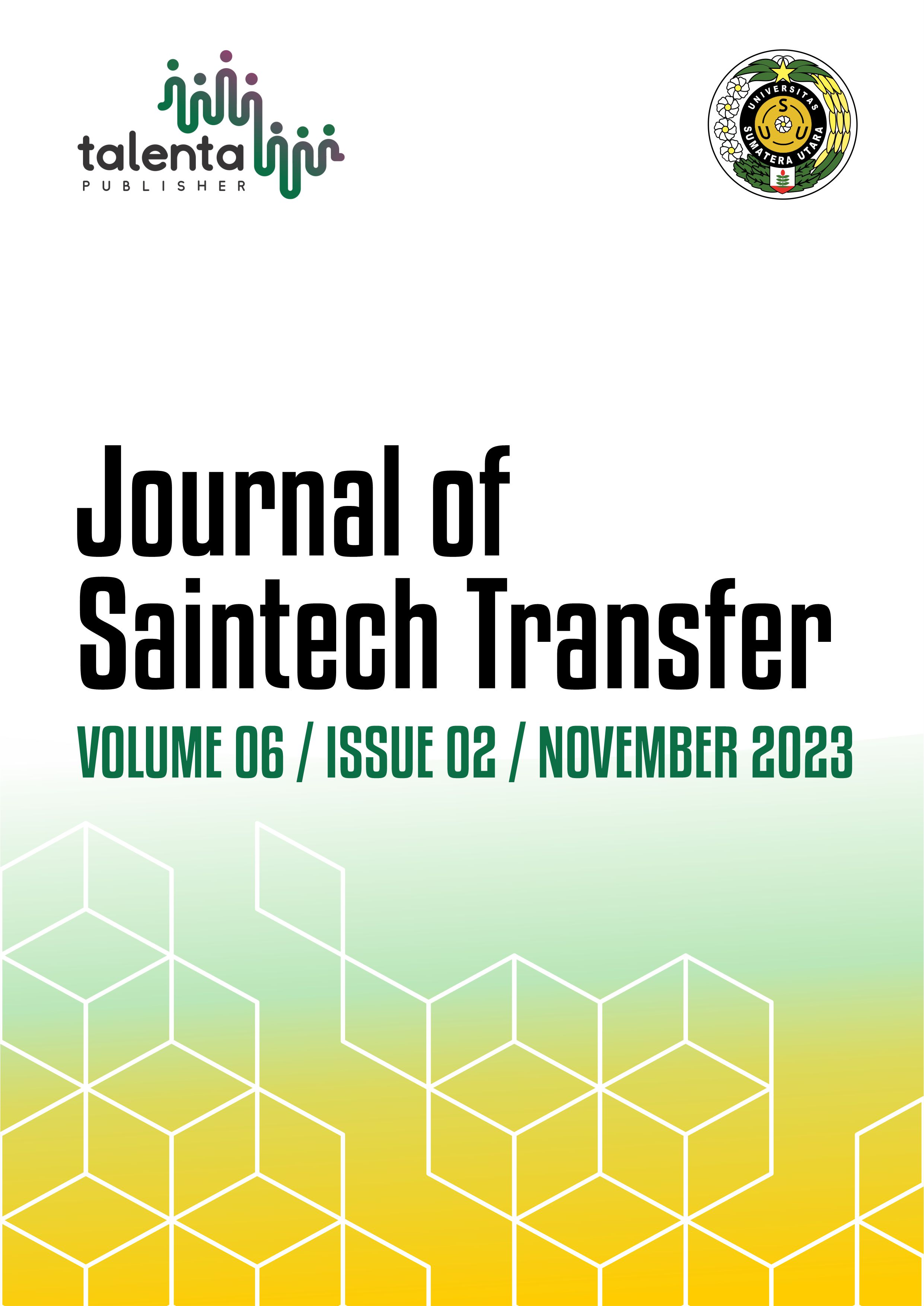Prevalence and Severity of Temporomandibular Joint Disorders in New Students of the Abu Ubaidah bin Al-Jarrah Mahad Foundation
DOI:
https://doi.org/10.32734/jst.v6i2.14915Abstract
Temporomandibular disorders (TMD) can be defined as a clinical problem which comprises of various signs and symptoms, such as pain in the temporomandibular joint or the masticatory muscles, limits in the range of motion, deflection, and clicking/crepitation. The etiology and pathophysiology of TMD has been viewed as multifactorial and complex, few factors were trauma, stress, parafunctional habits, psychological factors, hereditary and occlusal. This community service aimed to assess the prevalence and severity of TMD in freshmen students of Mahad Abu Ubaidah bin Al-Jarrah in 2022 using the Fonseca Anamnestic Index. Community service participants were 157 new students, of which 52.9% were female, and 47,1% were male. Based on the severity, 26,7% were symptom free, 46,5% had mild symptoms, 19,8% had moderate symptoms, and the remaining 7% had severe symptoms. Based on gender, most of the male participants were TMD free, while most female participants had mild TMD symptoms. In conclusion, in this community service showed high prevalence of TMD where only 26,7% of the total participants were TMD free, and the rest had TMD symptoms. Based on gender, TMD symptoms were found more in female participants. Fonseca Anamnestic Index is a useful tool in early detection of the signs and symptoms of TMD.
Downloads
References
S O A Hayek, M F A Thunayan, A M Alghaibab, R M Alreshaid, A Omair “Assessing stress associated with temporomandibular joint disorder through Fonseca's anamnestic index among the Saudi physicians.†Clin Exp Dent Res. pp. 52-58. 2019.
D Yaman, C Alpaslan, O Kalaycioglu. “Assessing stress associated with temporomandibular joint disorder through Fonseca's anamnestic index among the Saudi physicians.†Acta Odontol Turc vol. 38, no. 3, pp. 62-67. 2021.
J Wu, Z Huang, Y Chen, Y Chen, Z Pan, Y Gu. “Temporomandibular disorders among medical students in China: prevalence, biological and psychological risk factors.†BMC Oral Health, pp. 1-8. 2021.
S Özdinç, H Ata, H Selçuk, H B Can, N Sermenli, F N Turan. “Temporomandibular joint disorder determined by Fonseca anamnestic index and associated factors in 18- to 27-year-old university students.†The Journal of Craniomandibular Practice, pp. 1-6. 2018.
H Umniyati. “ The prevalence of temporomandibular disorder (tmd) and its severity among yarsi university employees.†J Dent Maxillofacial Sci vol. 5, no. 2, pp. 84-85. 2020.
T Magnusson, I Egermark, G E Carlsson. “A longitudinal epidemiologic study of signs and symptoms of temporomandibular disorders from 15 to 35 years of age.“ J Orofac Pain vol. 14, pp. 10-9. 2000.
R Celic, V Jerolimov, D K Zlataric. “Relationship of slightly limited mandibular movements to temporomandibular disorders.†Braz Dent J vol. 15, pp. 151-154. 2004.
K Nomura. “Use of fonseca’s questionnaire to assess the prevalence and severity of temporomandibular disorder in brazillian dental undergraduates.†Braz Dent J, vol. 18, no. 2, pp. 163-167. 2007.
Downloads
Published
How to Cite
Issue
Section
License
Copyright (c) 2023 Journal of Saintech Transfer

This work is licensed under a Creative Commons Attribution-NoDerivatives 4.0 International License.















